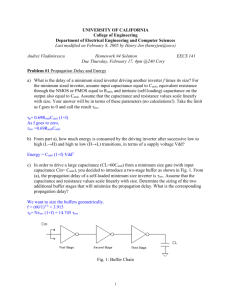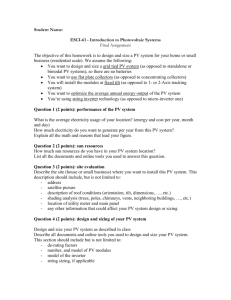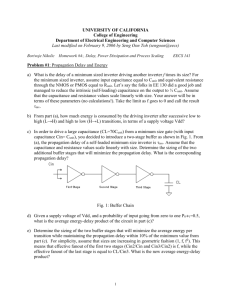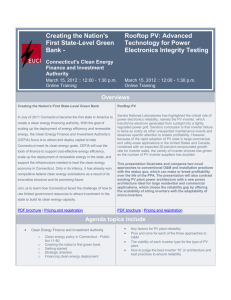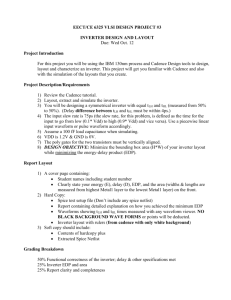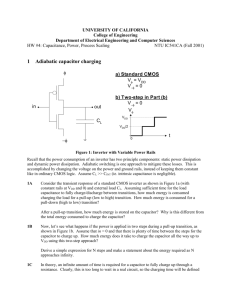Homework #4 - University of California, Berkeley
advertisement
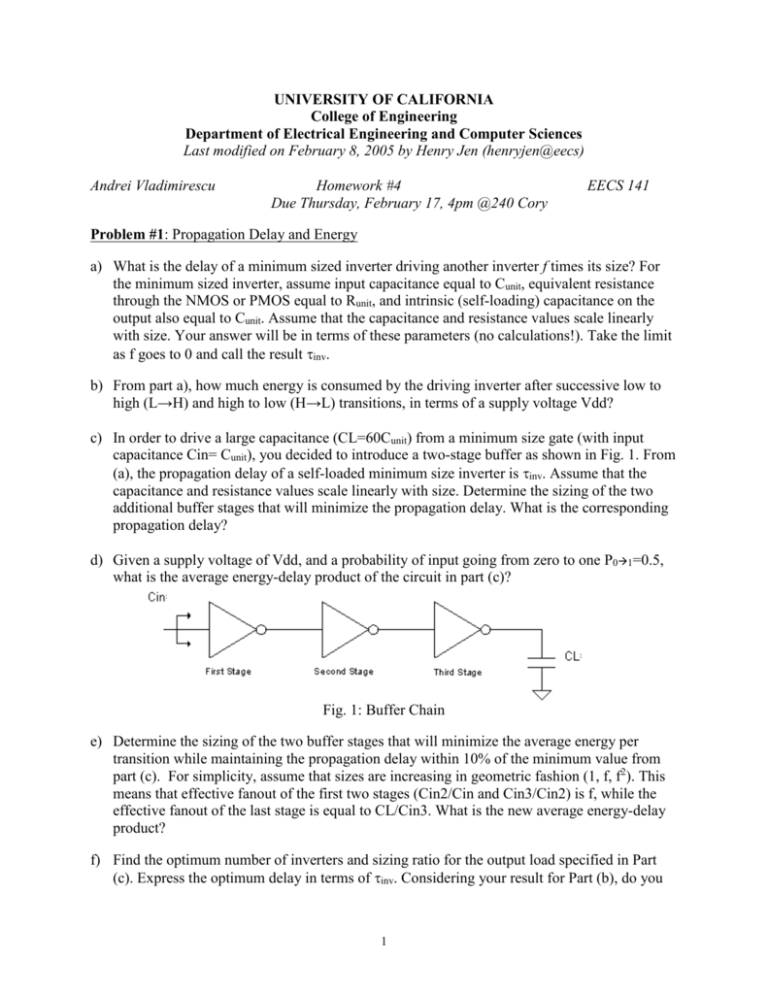
UNIVERSITY OF CALIFORNIA College of Engineering Department of Electrical Engineering and Computer Sciences Last modified on February 8, 2005 by Henry Jen (henryjen@eecs) Andrei Vladimirescu Homework #4 Due Thursday, February 17, 4pm @240 Cory EECS 141 Problem #1: Propagation Delay and Energy a) What is the delay of a minimum sized inverter driving another inverter f times its size? For the minimum sized inverter, assume input capacitance equal to Cunit, equivalent resistance through the NMOS or PMOS equal to Runit, and intrinsic (self-loading) capacitance on the output also equal to Cunit. Assume that the capacitance and resistance values scale linearly with size. Your answer will be in terms of these parameters (no calculations!). Take the limit as f goes to 0 and call the result inv. b) From part a), how much energy is consumed by the driving inverter after successive low to high (L→H) and high to low (H→L) transitions, in terms of a supply voltage Vdd? c) In order to drive a large capacitance (CL=60Cunit) from a minimum size gate (with input capacitance Cin= Cunit), you decided to introduce a two-stage buffer as shown in Fig. 1. From (a), the propagation delay of a self-loaded minimum size inverter is inv. Assume that the capacitance and resistance values scale linearly with size. Determine the sizing of the two additional buffer stages that will minimize the propagation delay. What is the corresponding propagation delay? d) Given a supply voltage of Vdd, and a probability of input going from zero to one P01=0.5, what is the average energy-delay product of the circuit in part (c)? Fig. 1: Buffer Chain e) Determine the sizing of the two buffer stages that will minimize the average energy per transition while maintaining the propagation delay within 10% of the minimum value from part (c). For simplicity, assume that sizes are increasing in geometric fashion (1, f, f2). This means that effective fanout of the first two stages (Cin2/Cin and Cin3/Cin2) is f, while the effective fanout of the last stage is equal to CL/Cin3. What is the new average energy-delay product? f) Find the optimum number of inverters and sizing ratio for the output load specified in Part (c). Express the optimum delay in terms of inv. Considering your result for Part (b), do you 1 think this inverter chain will consume more or less energy than a single inverter driving the output load? Problem #2: Power Dissipation Consider the “source follower” circuit used to drive a load CL=50fF shown above. M1 and M2 are both NMOS transistors parameterized by Table 3-2 on page 103 in the text, and 2f= -0.6V. The inverter is a standard CMOS inverter. Assume that the input square wave edges and the inverter are fast compared to the rest of the circuit a) Assuming that T is relatively long compared to tpLH and tpHL, sketch the transient waveforms of VIN and VOUT over a couple of cycles. b) What is the power consumption if T=50ns? Neglect the standard inverter and assume that C L dominates the device capacitance of M1 and M2. c) Consider what happens if VIN is not a square wave, but a data stream consisting of a random sequence of bits. If the bit period is 50ns and each bit has an equal chance of being 0 or 1, what is the average power consumption of the circuit? 2


